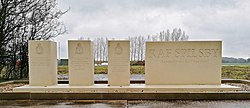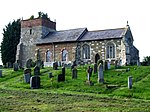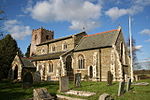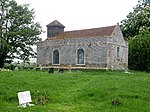Firsby

Firsby is a small rural linear village and civil parish in the East Lindsey district of Lincolnshire, England. It is situated 30 miles (48 km) east from the city and county town of Lincoln, 4 miles (6.4 km) south-east from the nearest market town of Spilsby, and 7 miles (11 km) inland from the holiday resort town of Skegness. The village lies on the northern side of the waterway today known as the Steeping River, which is the lower element of the River Lymn that sources in the Lincolnshire Wolds. Firsby was once the location of one of the busiest railway stations on the East Coast of England. The 2001 census recorded a village population of 276, increasing slightly at the 2011 census to 278.
Excerpt from the Wikipedia article Firsby (License: CC BY-SA 3.0, Authors, Images).Firsby
Thorpe Road, East Lindsey
Geographical coordinates (GPS) Address Nearby Places Show on map
Geographical coordinates (GPS)
| Latitude | Longitude |
|---|---|
| N 53.14703 ° | E 0.17557 ° |
Address
Thorpe Road
Thorpe Road
PE23 5QL East Lindsey
England, United Kingdom
Open on Google Maps










